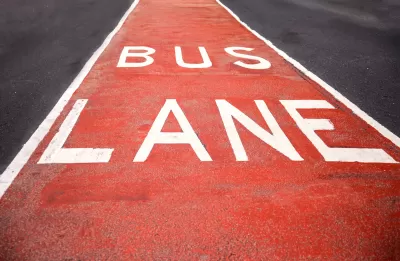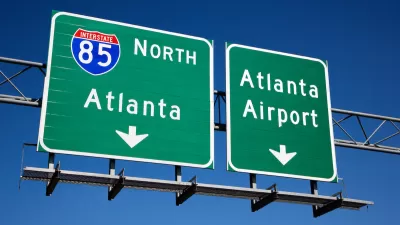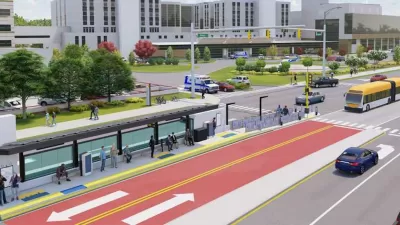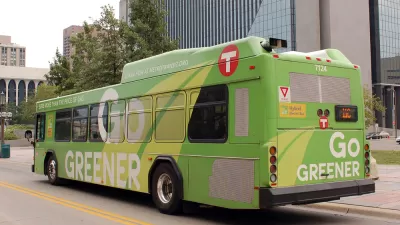Bus rapid transit lines offer a less expensive, quicker-build alternative to rail that can bring other infrastructure improvements with it.

In an article in Governing, Aaron M. Renn makes the case for bus rapid transit (BRT), arguing that the approach is a cost-effective way to improve transit service without the high costs and extensive timelines required to build new rail lines.
BRT offers other advantages, too. “Because they typically run on city streets, BRT systems also offer the chance to perform badly needed street and sewer repairs during construction. Sidewalks can be rebuilt or added. Traffic signals can be replaced, along with new features such as prioritizing buses over auto traffic and additional pedestrian safety measures.”
Renn points to the Red Line in Indianapolis as a successful example of BRT, noting that the entire project cost less than $100 million (whereas an Austin, Texas rail project is expected to cost $500,000 per mile), and the city benefited from a federal grant that funded 80 percent of the project. “That means the local funds essentially went to fix streets that already needed to be repaired, and the city got a BRT line for free, courtesy of the federal government.”
For Renn, BRT is a clear solution for many cities, offering a way to make transit service better and more reliable while making other infrastructure improvements.
FULL STORY: The Bus Lines That Can Solve a Bunch of Urban Problems

Study: Maui’s Plan to Convert Vacation Rentals to Long-Term Housing Could Cause Nearly $1 Billion Economic Loss
The plan would reduce visitor accommodation by 25,% resulting in 1,900 jobs lost.

North Texas Transit Leaders Tout Benefits of TOD for Growing Region
At a summit focused on transit-oriented development, policymakers discussed how North Texas’ expanded light rail system can serve as a tool for economic growth.

Using Old Oil and Gas Wells for Green Energy Storage
Penn State researchers have found that repurposing abandoned oil and gas wells for geothermal-assisted compressed-air energy storage can boost efficiency, reduce environmental risks, and support clean energy and job transitions.

Santa Barbara Could Build Housing on County Land
County supervisors moved forward a proposal to build workforce housing on two county-owned parcels.

San Mateo Formally Opposes Freeway Project
The city council will send a letter to Caltrans urging the agency to reconsider a plan to expand the 101 through the city of San Mateo.

A Bronx Community Fights to Have its Voice Heard
After organizing and giving input for decades, the community around the Kingsbridge Armory might actually see it redeveloped — and they want to continue to have a say in how it goes.
Urban Design for Planners 1: Software Tools
This six-course series explores essential urban design concepts using open source software and equips planners with the tools they need to participate fully in the urban design process.
Planning for Universal Design
Learn the tools for implementing Universal Design in planning regulations.
Ascent Environmental
Borough of Carlisle
Institute for Housing and Urban Development Studies (IHS)
City of Grandview
Harvard GSD Executive Education
Toledo-Lucas County Plan Commissions
Salt Lake City
NYU Wagner Graduate School of Public Service





























